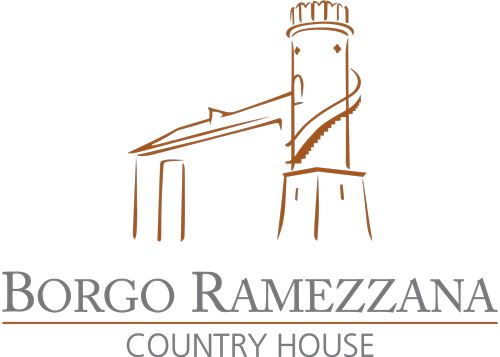





What characterizes and distinguishes Borgo Ramezzana is the presence of a crenellated tower and a neo-Gothic style building, a few meters distance from the small church dedicated to San Giorgio.
This medieval-style reconstruction of a manor house attached to a farmhouse suggests the possible presence of previous structures, perhaps remnants of the defenses of the medieval grange.
The architectural ensemble, with the broken arch windows and the terracotta floor markers, are from the late nineteenth century, and rest on a previous, older quadrangular base. Ramezzana was one of the "Grange" of the Lucedio Abbey, together with the nearby Montarucco and Montarolo.
The location was mentioned for the first time in 1183 and bricks from the Roman era were found in its territory in 1880. The ancient "Grangia" was built between 1186 and 1197.
Borgo Ramezzana, like the other Granges, was raised to Commenda in 1457 and then, with the secularization of the Church's possessions, it passed to the Mauritian Order in 1784.
At the time of the sale to private individuals, the farmhouse was divided between Giovanni Gozzani di San Giorgio and Luigi Festa: on 30 June 1852 the Borgo Ramezzana was sold by the brothers Marchese Alfredo and Count Enrico Solaro Del Borgo, with their mother Countess Paolina di San Marzano , in favor of the Royal Army Major Luigi Festa. In 1895 Borgo Ramezzana became the dowry of the bride Ernestina Festa, in her marriage to Prof. Giorgio Rattone. On 20 September 1900 Borgo Ramezzana was sold by Giorgio and Ernestina Rattone to Giovanni Battista Vercellotti, great-grandfather of the current owner.